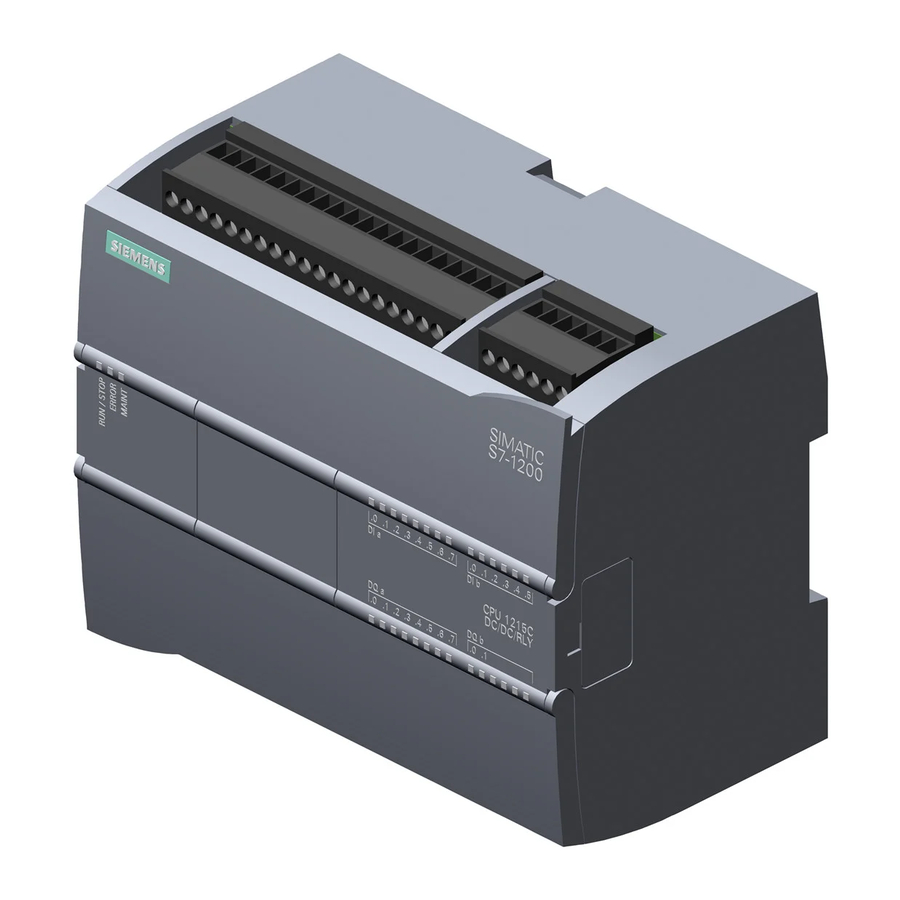Siemens SIMATIC S7-1200 안전 프로그래밍 매뉴얼 - 페이지 39
{카테고리_이름} Siemens SIMATIC S7-1200에 대한 안전 프로그래밍 매뉴얼을 온라인으로 검색하거나 PDF를 다운로드하세요. Siemens SIMATIC S7-1200 48 페이지. Controlling several fans (ebm-papst) via modbus rtu
Siemens SIMATIC S7-1200에 대해서도 마찬가지입니다: 매뉴얼 (30 페이지), 사용 설명서 (36 페이지), 매뉴얼 (40 페이지), 매뉴얼 (17 페이지), 매뉴얼 (31 페이지), 매뉴얼 (49 페이지), 매뉴얼 (20 페이지)

4 Optimizing Safety Programs
Note
Depending on the application, it is not always possible to use all the suggestions.
However, they show why certain programming methods cause shorter
compilation and program runtimes than a non-optimized program.
Determining the runtime
TIA Portal automatically creates a data block, "RTGxSysInfo", for each F-runtime
group. Among other things, this block contains the current and the longest runtime
of this F-runtime group.
You will find this system-generated block in the project tree ("Program blocks >
System blocks > STEP 7 Safety").
Figure 4-2: System-generated DB: "RTGxSysInfo"
4.1.1
Jumps in the safety program
In a standard user program, a jump from one network to another (jump to label) or
from the block (return) is a simple program branch that is recalculated for each
cycle but not additionally protected. This means there is no check whether or not,
for example due to a memory error caused by EMC, a jump takes place despite the
"false" condition.
This is not allowed in a fail-safe program as it must be ensured at all times that the
program is in the correct branch.
This requires that both alternatives (jump to label is "true" or "false") be calculated
in their entirety in the protection program.
The more jumps you use in a safety program, the greater the influence on the
controller's performance.
Safety Programming Guideline
Entry ID: 109750255,
V1.0,
10/2017
39
